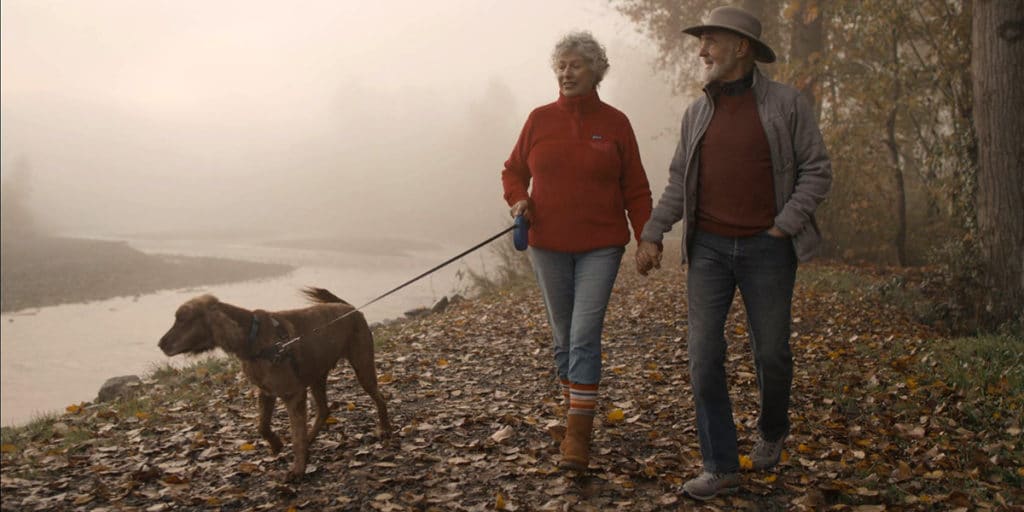This post is written by Teeter founder, Roger Teeter
When I was in my late teens, I was in a very serious car accident in a TR 4 Triumph, which is the model prior to the roll-up windows that has a cut-down door. The top was down and I remember the front wheels catching on gravel in a turn so that the car flipped end for end, flying upside down.
The windshield sheared off and I landed with the car on top of me (no seat belts in those days). The driver and I were half in and half out of the car with that cut-down door just touching our chests. It was only by the grace of God that we both not only survived, but the only injury between us was a severe contusion in the middle of my back where I had landed on a rock. That contusion took 8 months to dissipate, after which I felt back to normal for the most part.
What I did not learn until 30+ years later was that a significant chunk of bone had broken off the thoracic T7 vertebra and, over time, had welded T7 to T6, effectively immobilizing movement between these two vertebrae. In the X-ray, the welded chip looked like a teacup handle joining the two vertebrae. The doctor who read the X-ray said those two vertebrae were firmly welded together by the time I turned 25.
It was 10 years after that accident when I wrecked my back testing water skis and went through 5 years of back pain problems finding no significant relief… until I tried inversion. I was skeptical that 5 minutes of inversion could do anything for me when, after all, I was upright 16 hours a day. I reluctantly gave it a try. The back pain relief was temporary but much better than anything else that I had tried in the past 5 years. By inverting on a regular basis, I have been virtually free of back pain for the last 40 years. The dramatic relief I experienced is the reason my wife and I started Teeter in 1981.
OK – here is where the two stories above come together. During the first several years of inversion, every time I inverted there were about 7 distinct pops and snaps as my spine decompressed. One day about 4 years into my daily dangle routine, after the usual pops and snaps, I was doing some additional stretching such as pelvic tilts and side to side rotations. All of a sudden there was a very loud crack and my head dropped notably closer to the floor. I was terrified and sure something had broke. Testing all body movements and finding them working, I was greatly relieved but puzzled. A few days later, the crack repeated but not as loud, then it became almost daily.
About that time, a doctor who taught chiropractic principles at a local college arranged for me to have full-body X-rays both standing and inverted (initially a marketing plan to prove the elongation of the body during inversion and it worked!) With full-body optically correct x-rays, anyone could take a tape measure and measure body length from the atlas (smallest vertebra next to the skull) to the ankle joints. In the first minute, I lengthened 1 inch and at 10 minutes, it was 1- 7/16″! You could see every joint was opened up, some more than others. The knee joints, for example, showed about 1/8 open space while standing and open space while inverted. We also discovered that T6 and T7, previously welded, had broken free – surely the cause of that loud crack after 4 years of daily inversion.
Teeter Inversion Tables are often touted for relief of lower back pain and neck pain, but little is said about benefits to the thoracic. Perhaps this is due to the fact that the thoracic, which supports the ribs, is much less flexible and therefore less subject to injury. In my experience, a high percentage of thoracic problems are due to trauma as in my case. The benefits to decompressing the thoracic are, however, no different than the decompression benefits to the rest of the spine.
Those 8 pops and snaps that I counted every time I inverted (which have slowly one by one stopped) are proof of my continued improvement of spinal health through daily inversion. Today, I occasionally get one pop from my left S1 joint – that’s it. To me, that means a more supple, flexible spine which allows me to continue to do the things I enjoy. I am in my 70s and I am still wakeboarding, surfing, cycling, running (on soft ground only) and resistance training. The only thing I currently don’t do that I did as a younger man for years is water ski jump using a ramp (I trust you will agree this was a prudent move).
– Roger Teeter
Exercise Now. Pay Later.
Now you can try the Teeter FreeStep in your own home FREE for 30-Days, 0% APR* with Affirm.
